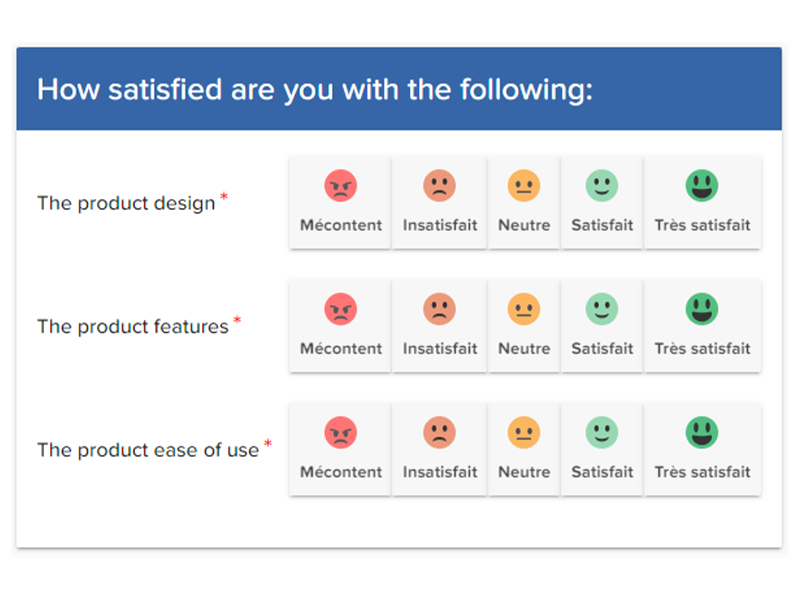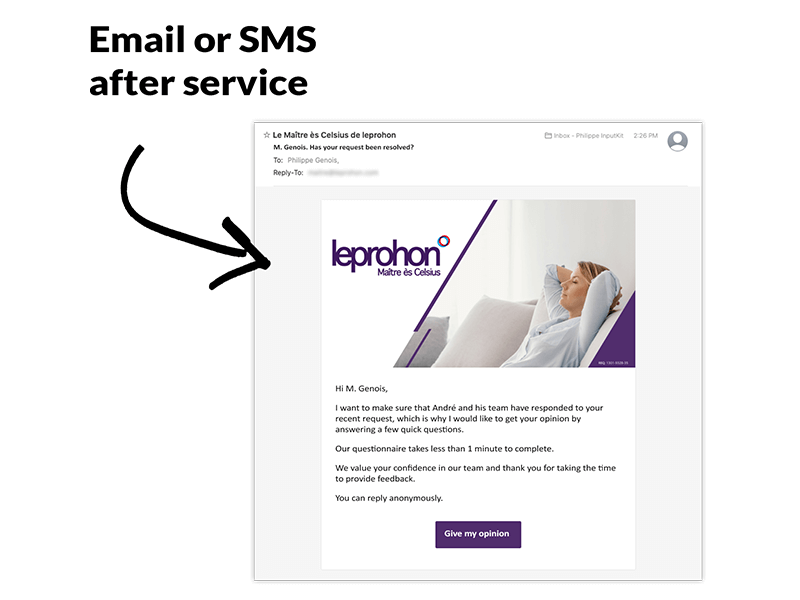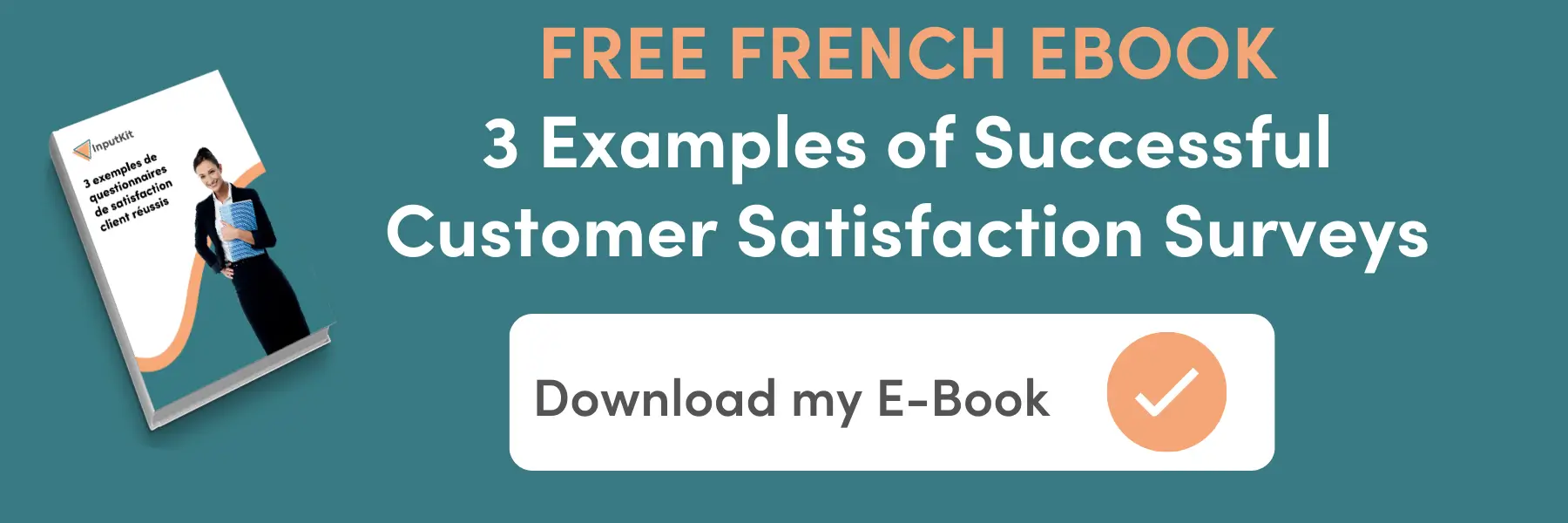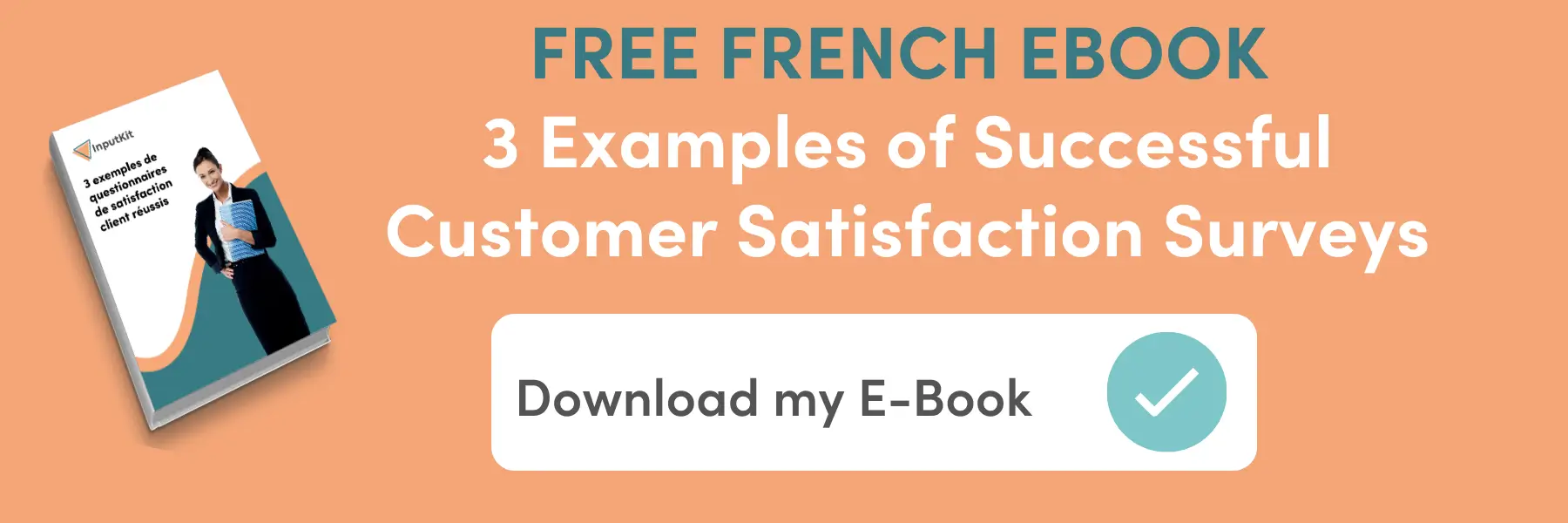In the field of Business to Business (B to B), success lies in the strength of the relationships you create with your client companies. To maintain long-term B to B customers, you need to learn about the expectations of your prospects to meet them through the establishment of a human and personalized partnership. However, acquiring the knowledge necessary to establish such a connection can be a real challenge, especially considering that your customers’ needs may change over time.
How can you improve your B to B customer relationships? With trusted relationships that will last through time! Indeed, in the context of Business to Business, each of your clients presents a long-term business opportunity. In that sense, be sure to show your business customers how important they are to you.
Manage your relationships professionally and humanely, and then adapt your experience to the goals of your customers. This way, they will know that they’re always at the center of your priorities! Not sure how to solidify your customer relationships in B to B to ensure better retention? Here are 10 helpful tips to help you get started!
Download now: -> FREE FRENCH EBOOK 3 Examples of Surveys to Ensure the Satisfaction of your Customers in B to B
What is the B to B customer relationship?
B to B customer relationship: Definition
B to B, the acronym for the term Business to Business, is defined as the business relationship between two companies, specifically when a company provides the services/products and a customer company uses the products, services or solutions of the other company to achieve its objectives. In this context, B to B represents the relationship between the two companies together.
For example, these B to B relationships can result in:
- An offer of service;
- A product;
- A service;
- A solution;
- Of trade.
To this end, a customer relationship in the field of Business to Business is presented as a commercial exchange between two companies. For example, a company that buys the employee experience solution from another company in order to improve the performance of its employees has a B to B customer relationship with the developers of the solution.
This relationship, built on long-term trust and collaboration, will benefit both companies. One will improve the employee experience; the other will work with a customer who can provide feedback on the product being used. This is beneficial to both parties as this relationship will improve their respective performance.

What are the particularities of Business to Business compared to Business to Customer?
The particularities of the customer relationship in B to B
- The purpose of purchasing is to meet the needs of a company and individuals within a company: Like customer relations in a Business to Consumers context, B to B begins with a purchase of a product or service. However, B to B is characterized by the purchase of this product or service offered for the profits of a company rather than for the personal well-being of an individual. For example, a company that needs to increase its online reviews could purchase a solution like InputKit to achieve its goal. In this sense, this company would have a B to B customer relationship with InputKit. This purchase would therefore serve to meet the needs and objectives of an organization and its teams, rather than the individual needs of an individual in their personal life.
- The number of people involved in the decision-making process: In a B to B purchasing process, several stakeholders are involved in purchasing products and solutions. Often, the more the client company has a large organizational structure, the more people will be involved. Decision-makers, influencers, accounting validation and more: sometimes you have to deal with several different opinions and make sure to treat everyone involved with respect and importance.
- The high length of the decision/purchase process: Again, the organizational structure of the client company can have a big impact on the length of the process. The greater the number of actors involved, the longer the process may take. In addition, often, businesses that become potential customers want to compare and validate certain criteria as a group, which can take time. Did you know that it can take a company several months to validate a B to B purchase, whereas the same process often takes only a few minutes in B to C? Of course, there are exceptions, but all in all, the B to B purchasing process is often longer than in B to C.
- In B to B, the prices of the products purchased are often higher: Indeed, in most cases, the products and services provided in a B to B context are much more expensive than those in B to C. This price directly impacts a company’s decision-making process: the higher it is, the longer it will take the company to make a decision. This is quite normal: before making a major financial decision, we want to validate that it is relevant!
- B to B customer relationships often involve a long-term relationship with the customer: In B to C, buying often comes down to a transaction, and then the consumer consumes their product without necessarily staying in touch or in dialogue with the merchant company. In B to B, buying is not limited to a simple transaction: it continues with a long-term relationship. For example, when a company procures a business solution, it wants to make sure it is used correctly and therefore wants to keep in frequent contact with the company that sold the product. In this context, it is essential to ensure a good follow-up of customer satisfaction. After the purchase of a product or service, the company that provided the initial offer will have to answer the questions of its client, advise them on the use made of the product, and even offer relevant training to its teams to make good use of this novelty.
- The need for educational marketing content: It is important to create good B to B marketing campaigns. Content such as ebooks and blog posts can illustrate how your products and services can set them apart from the competition. Offer logical and rational arguments to convince them of the importance of this purchase for their organization. This way, you can acquire valuable customers in Business to Business. In addition, the actors involved in the decision-making process are accountable to their boss: they want an impeccable product whose purchase brings several benefits to their company. Your content should therefore reflect these aspects!
- The volume of customers is lower: In B to B, the volume of customers is often lower. This is normal, since the sale of products/services is often more crowded, so fewer individuals are attracted. This does not mean a lower turnover: very often, as mentioned earlier, these are more expensive purchases!
The particularities of the customer relationship in B to C
- The purpose of the purchase is to meet the personal needs of an individual: Unlike B to B customer relationships, B to C relationships are often based on purchases of products or services that are the result of a choice and benefits for personal use. To illustrate this nuance, a customer walks past a clothing store and loves one of the sweaters on display. After a brief conversation with one of the saleswomen, the customer tries the sweater and then decides to buy it.
- The customer’s decision-making process is faster: If we go back to our example, unlike B to B, the customer is the only person who makes the purchase of the sweater. As a result, the process is much shorter, since it involves fewer actors.
- B to C products are sold in larger quantities: As mentioned earlier, in B to B, customers often buy fewer products. In B to C, if we think for example of a company that sells clothing, because of the more affordable price and the involvement of fewer individuals in the process, the purchase process is simpler, so purchases are made more frequently, This results in a higher volume of product units sold. In this sense, in many cases, in B to C, companies have many more distinct customers and sell products in greater quantities than a company in B to B.
- B to C purchases are often of lower value: B to B products and services are often very expensive (software, supplies, etc.) and the most common B to C purchases are more affordable (clothing, everyday consumer products, etc.).
- B to C purchases are often generated by an emotional stimulus: Often, people in B to C fall in love with a product and they decide to buy it more impulsively. In contrast, in B to B, the process is very rational. For example, it is not uncommon to fall in love with a favorite garment, out of a desire to be part of a group or to look good with individuals. To this end, we can say that the triggers of customer relations in B to C are different from those in B to B!

Possible roles in the B to B purchasing process
As mentioned earlier, several players are involved throughout the decision-making process in a Business to Business context. To shed more light on the subject, here are four main players that impact an organization’s decision-making process before purchasing a product or service offer from another company:
- The decision-maker:
 This is the person who makes the final purchase decision. Sometimes not involved at the beginning of the process, the decision-maker is the one who, advised by the influencers, makes the decision to authorize the purchase of the product/service.
This is the person who makes the final purchase decision. Sometimes not involved at the beginning of the process, the decision-maker is the one who, advised by the influencers, makes the decision to authorize the purchase of the product/service. - The influencer: Although they cannot make a final decision, they have a strong influence on the decision-maker. They understand the benefits of the product/service offer and try to convince their boss to buy it.
- The user: Results in an individual who will use the product/service offer purchased from another company.
- The detractor: This is a person who questions the value of the product/service offered to their company. They doubt the advantages and benefits of the B to B customer relationship with the other company.
How to improve the customer experience and relationship in B to B? Our advice
Now that you know the characteristics and players involved in B to B, it’s time to improve the quality of your relationship and customer experience. However, this approach can be complex, especially since these relationships and experiences are long-term and involve many actors.
How can you improve your B to B customer relationships while providing an exceptional customer experience? To help you, here are ten best practices to follow to make you an expert in Business to Business.
1. Treat everyone involved in the process in a human way
 In B to B marketing, customer relationship management is a key factor in the success of your business. In this sense, it is crucial to fully understand the objectives and expectations of each actor involved in the decision-making process of your client company.
In B to B marketing, customer relationship management is a key factor in the success of your business. In this sense, it is crucial to fully understand the objectives and expectations of each actor involved in the decision-making process of your client company.
Good customer relationship management allows you to target and segment the different personal needs of your customers. Keep in mind that you are not only dealing with companies, but also with human beings.
In order to ensure the quality of your B to B customer relations, contact your partners regularly to clearly identify the decision factors of each of the players involved. Analyze their concrete needs, price reluctance, and then show them that you are the solution to their current problem.
Use logical arguments to reassure your clients about the quality of your services. Explain how your product/service benefits their business, and then offer long-term support to ensure your solution is well integrated into their organization.
By understanding the exact expectations of each actor, you will be able to offer a complete and personalized offer according to everyone’s needs. This is a must-have for retaining your B to B customers!
2. Stay in constant communication
A good relationship is based on mutual trust and clear and constant communication. Of course, B to B customer relationships are no exception!
To build a trusting relationship with your B to B customers, set clear, long-term goals with your businesses. Explain how you can help them achieve their goals and then support them through the various stages of the process. This understanding will greatly benefit your customer experience by showing them that their well-being is at the center of your priorities.
At every step of the way, also be transparent with your customers. Reiterate your goals to the players involved and develop a new plan if needed based on your client’s current journey. Continually provide relevant training to teams to increase their job performance. Finally, be empathetic and patient in managing your B to B customer relationships.
Remember that your clients are part of a collective of individuals. In this sense, you may need to repeat your plan several times during the process to ensure the proper integration of your product/offer within the client organization.
In short, regular communication with your B to B customers is the key to a great customer experience. By following this good practice, your business clients will quickly recommend your good services to other potential leads!
3. Validate customer satisfaction frequently with InputKit
Want to simplify your customer satisfaction tracking? If so, InputKit is the solution for you.
With our fully customized and automated satisfaction surveys, you can track your customers’ satisfaction at every step of your process. In this way, you can save valuable management hours while giving your customers the necessary support. Interesting, isn’t it?
Following customer satisfaction surveys, you will be able to interview your dissatisfied customers to discover and understand the reason for their dissatisfaction. By personalizing your surveys and observing your customer reviews online, you can correct many dissatisfactions to turn your detractors into promoters. This is a must to increase your customers’ commitment to your business!
At the end of a customer satisfaction survey, our solution also offers satisfied customers to leave a positive review online. To this end, you can better adapt your experience to the needs of your customers, but also increase your online reputation. This is a must for improving your e-reputation while attracting new prospects in the B to B field.
Interested in our solution? Don’t hesitate to plan a free and personalized InputKit demo to improve your B to B customer relationships!

4. Empower influencers to convince decision-makers
As stated earlier, many players are involved in the B to B decision-making process. In this sense, in order to stand out from the competition, it is important to properly equip your influencers so that they can convince decision-makers of the value of your products/services.
In order to build trusted B to B customer relationships, create clear, relevant and concise marketing content to better inform decision makers about the benefits of your business. However, throughout your process, keep in mind that decision-makers’ time is often valuable and limited. Create content that gets to the point. Here are a few examples:
- A short video highlighting the financial benefits of your proposal;
- A case study or summarized testimony that attests to the return on investment of your service offer;
- An online ROI calculator;
- And more!
These synthesized and effective content attest to the efficiency and return on investment of your product/service. By giving influencers such tools, they will convince their boss to sign up for your offer, which will reduce decision-making time. It is a must for acquiring new B to B customers.
5. Prove the ROI (return on investment) of your B to B solution/services
In the field of Business to Business, it can be difficult to convince some companies of the usefulness of your offer. To get there, why not send them a testimonial or a Return on Investment (ROI) calculator that proves the value of your solution/service?
With this argument, you can let the company calculate the return on investment it will earn by doing business with you. In addition, some synthesized testimonials can briefly explain their increase in revenues since the implementation of your solution or service. This is a great way to build new B to B customer relationships.
6. Educate your audience with quality content
As previously mentioned, the decision-making process in Business to Business can take several months. Why? Because the many players involved in the purchase are looking for the best possible tool to achieve their goal.
To this end, your product is not just a transaction: it is a long-term partnership, an element that will help them better accomplish their company’s mission.
To maintain the quality of B to B customer relationships, take the time to inform your customers and prospects about the use and benefits of your product. Your customers will be happy that beyond the purchase, you care enough about them to offer them free content. This will be well received and will be favorable in terms of loyalty. Keep a blog with many articles related to your area of expertise, and then explain how your services could help your prospects stand out from the competition. On social media, educate Internet users about the importance of having a solution like yours.
Finally, why not organize webinars to better inform your clients about your upcoming developments? These small attentions will be greatly appreciated by your customers and will not fail to attract new prospects within your company. These are excellent examples to follow to better educate your B to B customers and maintain quality relationships.
7. Offer customer support quickly
 Did you know that customer support efficiency is one of the main factors impacting customer satisfaction? Indeed, according to Hubspot’s study, 79% of customers expect a response within 24 hours. Moreover, according to the same source, 39% of Internet users are not satisfied unless they get support in less than an hour.
Did you know that customer support efficiency is one of the main factors impacting customer satisfaction? Indeed, according to Hubspot’s study, 79% of customers expect a response within 24 hours. Moreover, according to the same source, 39% of Internet users are not satisfied unless they get support in less than an hour.
To this end, take care to provide your business clients with the support they need. Form teams entirely dedicated to customer support. This strategy will allow you to provide quick and effective support to your customers as soon as the need arises. This is a significant asset for building a relationship of trust with your clients.
No business likes to be left on their own after a new solution or service is implemented. In this sense, it is important to provide them with the necessary support for the proper functioning of your product/service within their organization.
8. Use technology, including CRM, to deliver a quality experience
To optimize your B to B customer relationship management, it is important to have good, state-of-the-art tools. For example, implementing a CRM, otherwise known as the Customer Relationship Management System, can be extremely beneficial for your business. It is essential today to implement a good CRM platform to simplify the management of your customer relations in B to B,
Such a platform centralizes your customers’ data and allows your employees to access their history. Such a feature is an excellent tool for B to B loyalty: it allows your teams to adapt their advice and training to your customer’s current needs. This will have a positive impact on your Business to Business relationships, as your customers will know that reaching their goal is at the center of your priorities.
In addition, these records are regularly updated with new contacts and details related to your customers’ progress in order to provide your employees with the most accurate information. Accompanied by an internal chat, the CRM greatly facilitates communication between your company and its customers. Keep this in mind to create a successful B to B customer experience!
9. Respect your deadlines and agreements
In the context of B to B customer relations, trust is a key factor for the success of your business. It is through it that you can maintain quality relationships that endure through time. However, this confidence is as hard to gain as it is easy to lose.
In that sense, be transparent with your business clients. Communicate with them on an ongoing basis, especially during plan changes. Minimize delays as much as possible to meet your commitments and reduce customer dissatisfaction. Finally, if certain delays are inevitable, show empathy to correct the situation.
Apologize to the company and then look for a suitable solution to address customer dissatisfaction. Remember: by being proactive and respecting your agreements, you will certainly maintain your B to B customers.

10. Improve your product/service based on feedback from InputKit
In the field of B to B, it is crucial to know how to adapt to the needs of your customers. In this sense, a customer satisfaction and assessment solution like InputKit can help you better personalize your customer experience to your customers’ current needs.
With our fully automated and customized satisfaction surveys, you’ll get valuable feedback at every step of your onboarding process. This feedback will allow you to tailor your products and services to your customers’ concrete needs. This is a significant asset for improving your B to B customer experience. Thus, on a recurring basis, it may be appropriate to regroup as a team and learn about the feedback collected in the customer surveys. You may notice some findings, such as that your delays are too long or that your product is complex to use. This will clearly guide your next targeted optimizations.
In addition, our centralized management with a filter for non-responded reviews will allow you to quickly access feedback from your customers online. In this way, you will be able to better correct your customer dissatisfaction, but also to find out about potential flaws in your customer experience. This strategy is an excellent B to B loyalty tool, as it will show your customers that their satisfaction is at the center of your priorities.
Have difficulty identifying your clients’ current needs? Don’t hesitate to plan a customized demo of our solution with our customer experience experts to benefit from our customer satisfaction survey!

Schedule a free InputKit demo to improve your B to B customer experience
While improving your B to B customer relationships can be a real challenge, it is possible to optimize your practices by following our best practices to maintain strong relationships that will last through time.
Take care to inform the various stakeholders in the decision-making process of the benefits of your service offer through relevant marketing campaigns and tools that will convince decision-makers. Throughout the implementation of your products, communicate consistently by relying on the information of a CRM and offering excellent customer support. Constantly educate your audience by creating quality webinars, trainings and relevant articles.
Finally, remember that the implementation of InputKit can be of great benefit to your B to B customer relationships. Our easy-to-use solution allows you to send fully automated and personalized satisfaction surveys that will save you several hours of management. With these surveys, you will gather valuable information that will allow you to better adapt your service offering to the real needs of your customers.
Are you interested in the many benefits InputKit can bring to your business? If this is your case, don’t hesitate to plan a free and personalized demo of our solution with our team of customer experience experts. We will be very pleased to improve the management of your customer relationships in B to B!
Related articles

Receive our best articles and tips by email
Be the first to know about our new articles.











